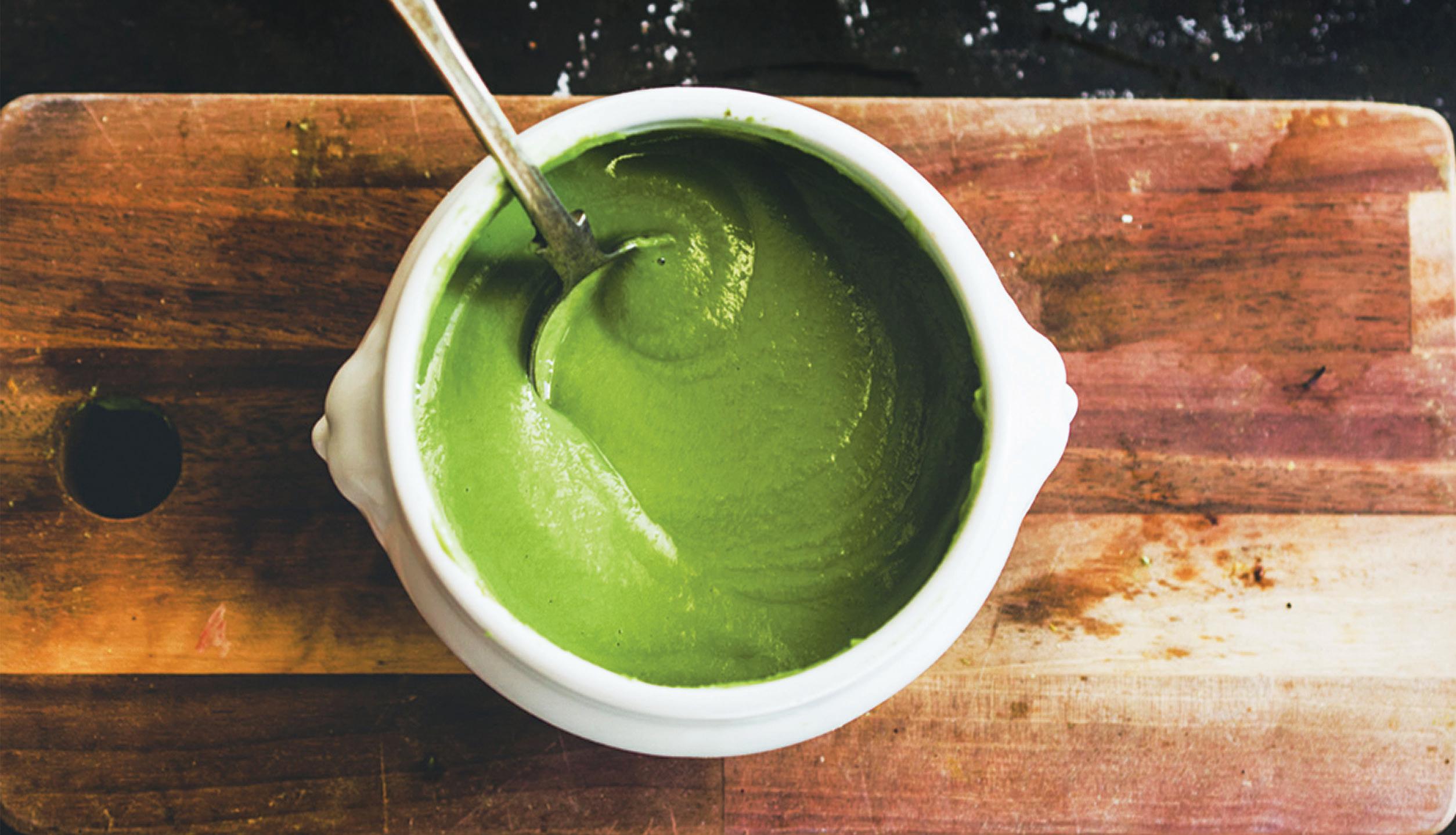
4 minute read
HEALTHY EATING
[ H E A LT HY E AT I NG ]
FOOD AND MOOD IN TIMES OF CRISIS
Advertisement
by Betsy Bruns
We all may be experiencing the pandemic in different ways. Some may feel more fear, either of the virus or about their financial future, while others may feel grateful to have better quality time with family and more time at home. There are many aspects of life we can’t control but focusing on what we can control, will have a positive impact on our sense of wellbeing as we navigate uncertain times.
You may have heard of (or even be experiencing) a phenomenon called “the lockdown 15.” These are the pounds people are gaining from quarantine stress munching and a true example of eating one’s feelings. It seems that many of us are seeking to regulate our mood with food.
At age 16, I narrowly survived a suicide attempt after years of anxiety and depression. Overweight and overloaded with toxins, processed foods and chemicals, my body was starving for healing foods and mood regulators found in whole plant foods. What I did not know back then is that I was overfed and undernourished.
Food is not just calories and carbohydrates; it has great power to harm and great power to heal. During the pandemic, I have been therapeutically turning to food. Each day, I aim to eat seven servings of fruits and vegetables. I also avoid all animal foods and limit overly processed foods as much as possible. I credit my diet with regulating my mood and overall sense of wellbeing. Good nutrition can be a great line of defense against the anxiety and stress we may be feeling.
When it comes to diet and mood, studies point to both the benefits of fruits and vegetables and the harmful effects of animal foods. Research links depression to inflammation in the brain and chemical imbalances of neurotransmitters. Plant foods are high in antioxidants and phytochemicals, which help to
Plant foods can help restore balance to neurotransmitters. Many people suffering from depression have elevated levels of an enzyme called monoamine oxidase or MOA. MOA can break down serotonin, dopamine and norepinephrine, neurotransmitters that help regulate mood. High MAO levels may lead to low levels of these specific neurotransmitters, causing depression. The phytochemical quercetin, found only in plant foods, acts as an MAO inhibitor. Working much like a natural antidepressant, quercetin can increase the amount of serotonin, dopamine and norepinephrine in the brain. Foods with high levels of quercetin include apples, kale, berries, grapes, onion and green tea.
Animal foods, like chicken and eggs, are high in a type of fat called arachidonic acid. Eating foods high in arachidonic acid sets off a chain of chemical reactions in our body which leads to an increase in inflammatory mediators in the bloodstream. The result is inflammation or an overreactive immune response. When inflammation reaches the brain, feelings of anxiety, stress, hopelessness and depression escalate.
Those who avoid foods high in arachidonic acid report a happier, more positive mood. Eliminating inflammatory animal foods from the diet not only improves physical health but mental health as well.

APPLE PIE NACHOS*
Serves 2 Is it breakfast, dessert or a movie snack? Any time of day is the right time for this 1 apple, diced ½ teaspoon ground cinnamon 2 tablespoons agave nectar or maple syrup 5-6 ounces vegan yogurt (plain or vanilla) Cinnamon, to taste 2 tablespoons crushed pecans or walnuts 3 6-inch corn tortillas 1-3 teaspoons cinnamon sugar
For the cinnamon chips: Preheat the oven to 375°F and line a baking sheet with parchment paper. Cut tortillas into triangles and place them in a single layer on the pan. Sprinkle with cinnamon sugar. Bake 5-10 minutes or until chips are crisp. (You can use a pita in place of the tortillas.)
Meanwhile, pour a 1 / 4 cup of water into a skillet over low heat. Add diced apple and cinnamon. Cover and cook for about one hour or until apple pieces are very soft and starting to break down. You want it to be like a thick jam or compote.
Top cinnamon chips with cooked apple. Drizzle with sweetener and a dollop of plant-based yogurt. Add a sprinkling of cinnamon. Garnish with pecans or walnuts.
ZUCCHINI-CASHEW SOUP**
Serves 2 So, so easy to make! The comforting creaminess comes from cashews, which have special mood-enhancing benefits. This soup can also be made raw by adding uncooked zucchini to the blender. Serve with a side salad and crusty wholegrain bread, or over cooked grains.
2 large zucchinis, steamed until fork tender and cut into chunks ½ cup raw cashews ½ teaspoon Himalayan sea salt, or to taste 1 sprig fresh basil (or fresh herbs of choice, to taste) Steamed vegetables, chopped (optional for chunky soup) Water Soak cashews in one cup of warm water for 30 minutes. Drain and combine cashews, zucchini, salt and herbs in a blender and mix until smooth, adding water as needed for desired consistency. Pour into a saucepan and reheat gently, but do not boil. For a chunky soup with a nutritional boost, add steamed chopped vegetables of your choice. This soup can also be served cold.
* Recipe and photo credit: Physicians Committee for
Responsible Medicine (PCRM) **Recipe: Betsy Bruns
Betsy Bruns is a plant-based health coach, “Food for Life” instructor with the Physicians Committee for Responsible Medicine (PCRM.org) and an Emotional Freedom Technique (EFT) practitioner and board member of Plant-Based Nutrition Movement (PBNM.org). When she isn’t making healing food taste like comfort food or helping clients tap away stress and cravings with EFT, she’s soaking up nature and dreaming of ways to make life more delicious for all beings. Visit Vegsetter.com.






